Fluffy calistegia - growing and care
All gardeners are familiar with the omnipresent bindweed with pinkish flowers, which actively grows, crawling onto tall plants and supports. Bindweed is a weed that many gardeners are trying to get rid of.
Content:
- French rose
- Reproduction of calistegia
- Planting a French rose
- Calistegia care
- Top dressing
- Pests and diseases
Another thing is fluffy calistegia. Although it resembles the bindweed by the way of growth, it belongs to cultivated ornamental plants.
French rose
Homeland calistegi - North China. Nowadays, a cultured calistegy can be found in many countries. In the wild, it lives in North America, China and Japan.
The flowers of fluffy calistegia have a diameter of 5-7 cm, fragrant, their color is pink, the petals are double, they look like roses. It is not for nothing that calistegia is often called a French rose.
Calistegia bloom begins in June-July, and if the plants are planted in the shade, then later. Abundant flowering pleases the eye for a long time (until the first frost). At night and in rainy weather, the flowers of the French rose close.
Kalistegia belongs to perennial climbing plants, hardy. But in a particularly harsh winter with little snow, it is recommended to cover the soil around the plant.
It is most often used for vertical gardening: it decorates gazebos, fences, walls of houses and other buildings, it is possible to create living partitions from it. Unfortunately, Kalistegia is not well suited for cutting, as it withers quickly.
During the summer season, the calistegia grows from 1 to 4 meters long, confidently braids twine or wraps around the fence net.
Without special care, it can grow in one place for about 10 years. In winter, plants die off, and with the onset of warmth they come to life again and begin to grow.
Reproduction of calistegia
The fluffy calistegia reproduces by root suckers, of which there are a lot, so that the plant is able to capture large spaces around. Therefore, there is no need to plant the plant: Kalistegia will cope with this on its own. In addition, she does not like being forcibly transplanted. She is able to "run away" from a place she did not like: to move a meter underground to a new point.
Most likely, it will not be necessary to plant the plant, but to destroy it: the calistegia grows rapidly and "occupies" the entire nearby territory. To avoid excessive spread, a container without a bottom is deepened into the soil around the flower, or slate, plastic or other material is dug in to a depth of 25 centimeters: its rhizome, although it branches very strongly, is located below the soil surface.
Planting a French rose
If you do not have a calistegy yet, then plant it using the following tips.
Soil for planting this loach should be moderately moist, loose. It is advisable to take sand with turf and humus in a ratio of 1: 2: 2. Sand can be replaced with ash or dolomite flour. Before planting, the soil is dug up and fed with complex mineral fertilizer (2 tablespoons per 1 square meter) and ash (2-3 glasses per 1 square meter).
Take parts of the rhizome and place them at a depth of 15-20 centimeters. The soil must be constantly moistened.
It is necessary to plant Kalistegiya in a well-lit place, but it also grows well in partial shade. It is better to plant Kalistegiya in the spring.If you planted a plant in the fall, then you should definitely cover it for the winter. To do this, you can take sphagnum moss or other covering material.
When the kalistegia grows up, it is necessary to pull the ropes or netting so that the plant can weave.
Calistegia care
Calistegia does not require special attention, is resistant to environmental influences, and its flowering fascinates others. Therefore, this plant is ideal for beginners and lazy gardeners.
Please note that Kalistegia begins to awaken from winter only in late spring - early summer. Therefore, when weeding the area, be careful not to destroy the roots.
Calistegia does not tolerate stagnant moisture, easily withstands drought. But with a strong drying out of the soil, it requires glaze.
To prevent the plant from losing its decorative appearance and to prolong flowering, it is recommended to remove dried flowers. At the end of autumn, the lashes must be cut and discarded.
Calistegia is unfriendly to other plants: it drowns out neighbors and inhibits their growth.
Top dressing
In the middle of summer, plants are fed dissolved in water mullein, and during the flowering period - once every 10 days, fertilize with a complex mineral fertilizer (1 tablespoon per 10 liters of water).
Pests and diseases
In cold and damp weather, there is a risk of spreading fungal diseases. Most often, calistegia is affected by powdery mildew and rot. To fight disease, you can use "Fitosporin".
The most common pests are slugs and snails. "Confidor" and "Commander" will help to destroy them.
If you give a little of your attention to the French rose, then it will delight you with its beauty for a long time.




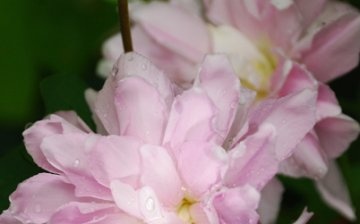
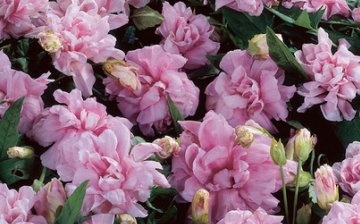
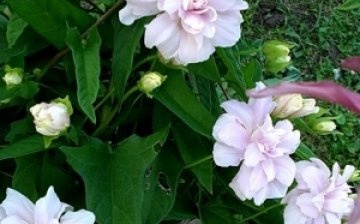





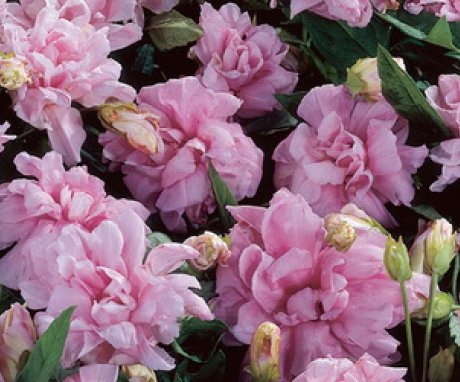
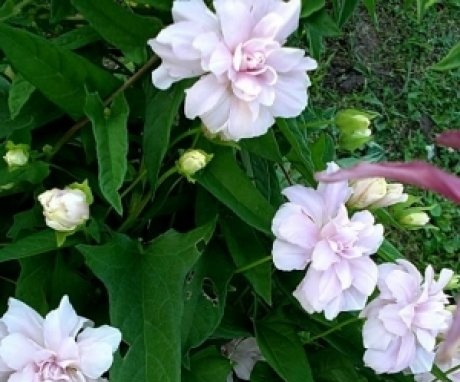
And I see such beauty for the first time in my life! We have bindweed - white bell-shaped. And that's all. There is no such fluffiness.
calistegia is not an ordinary weed bindweed, but a refined plant))